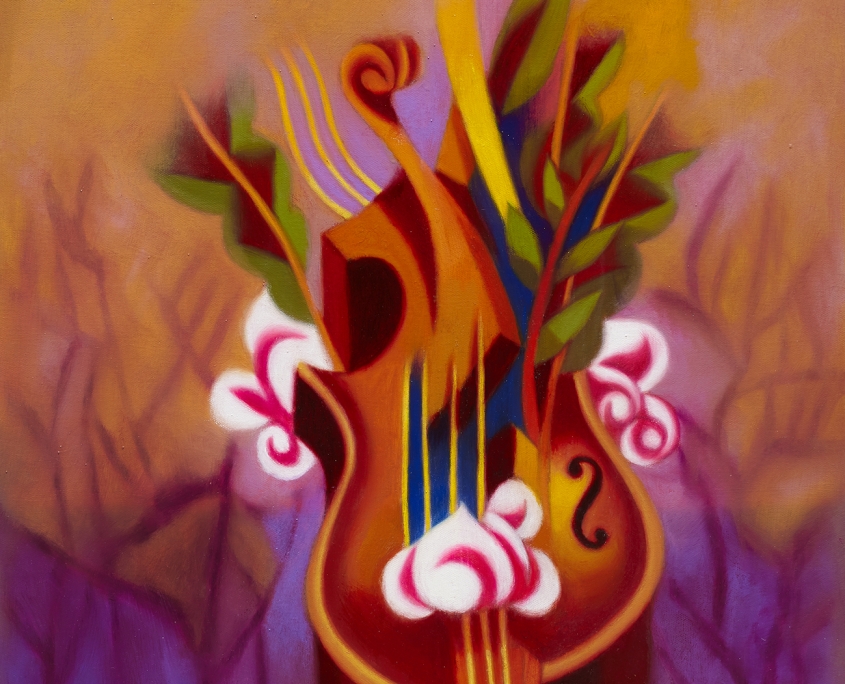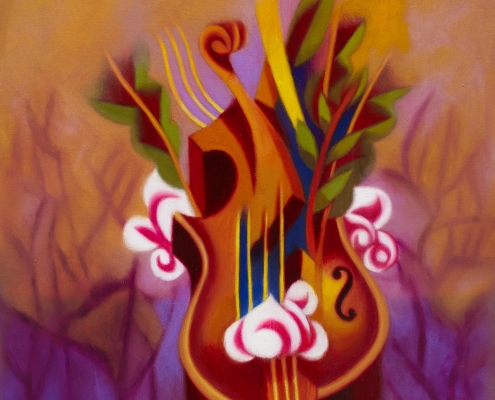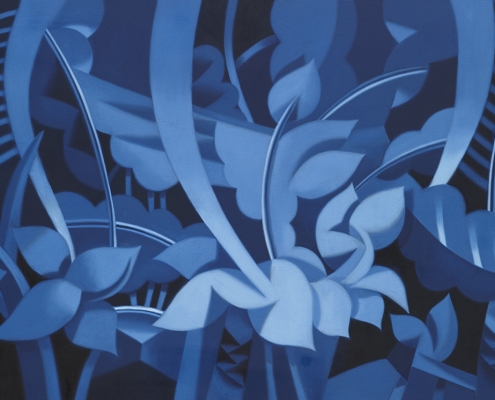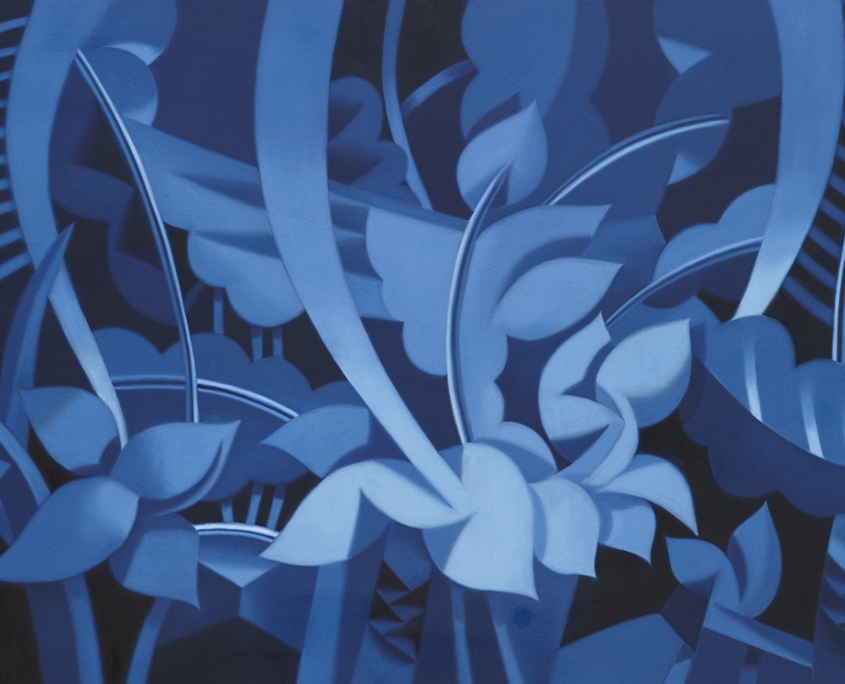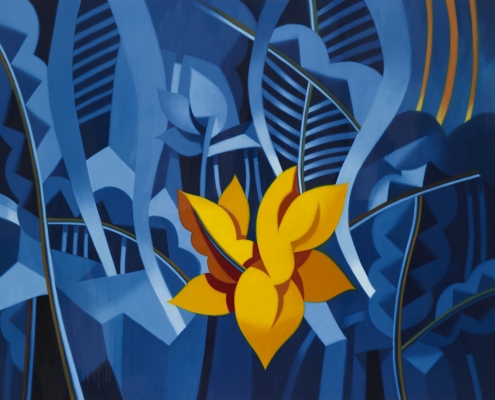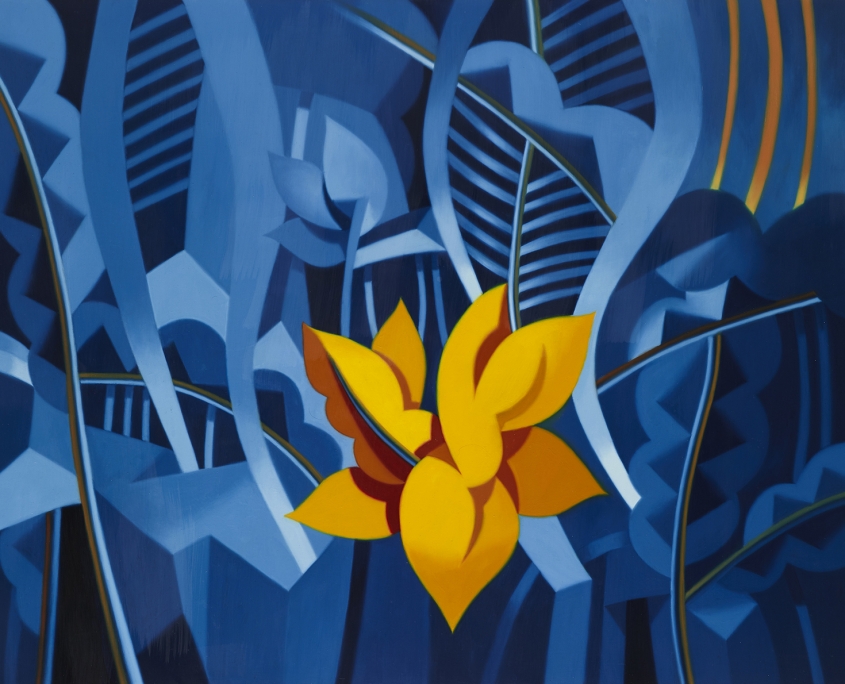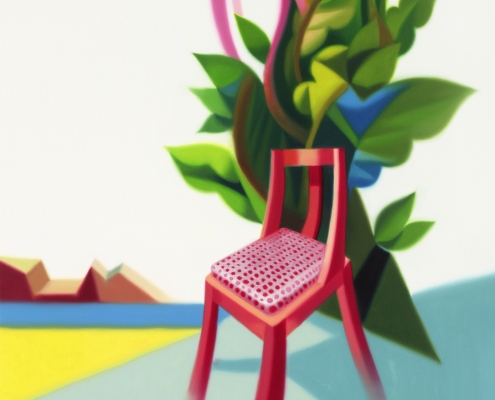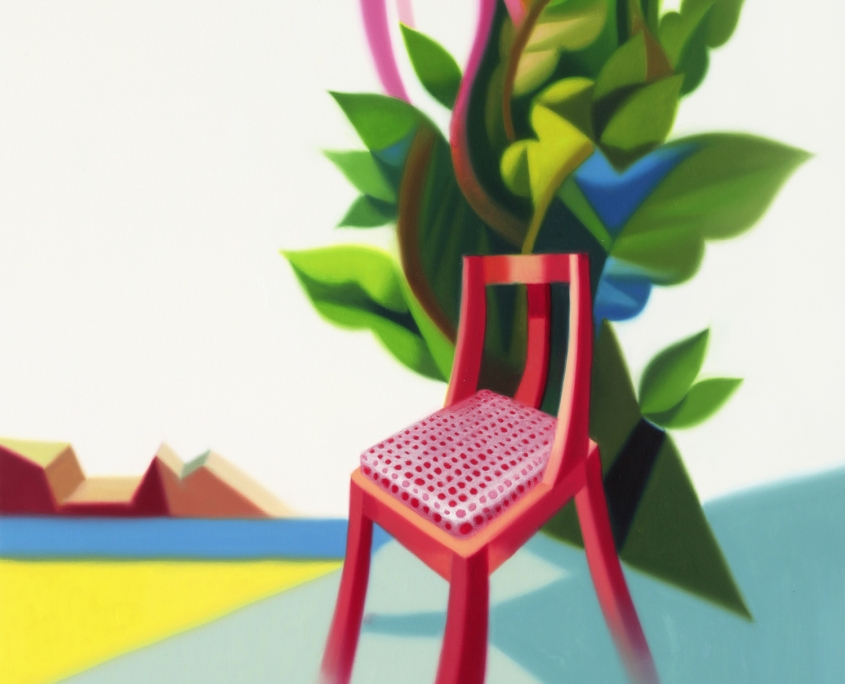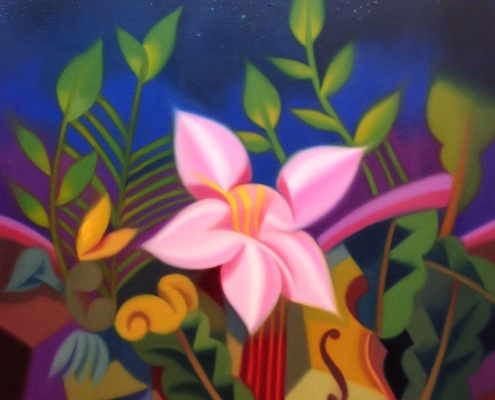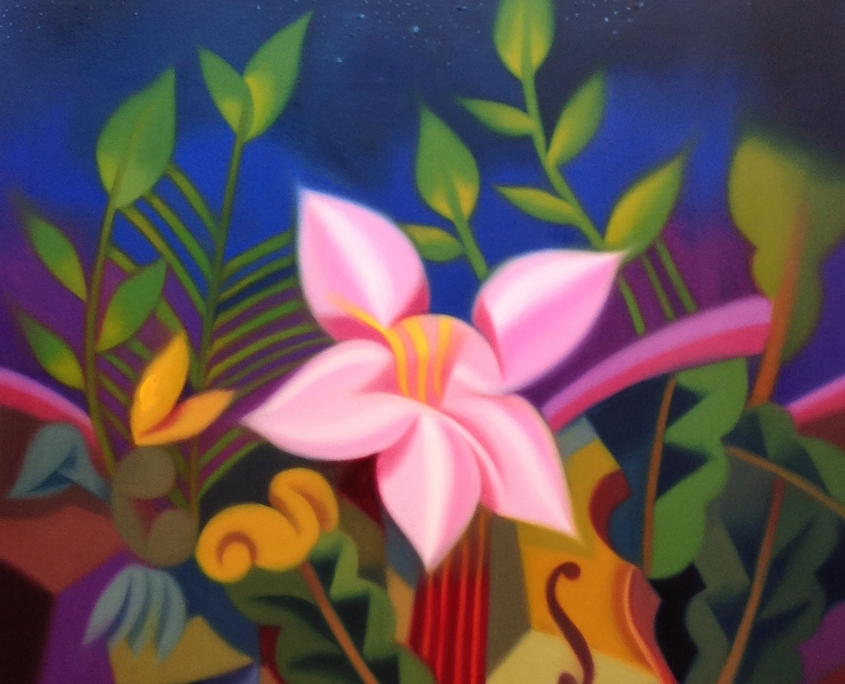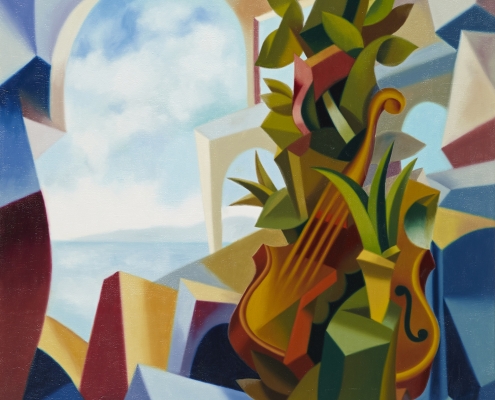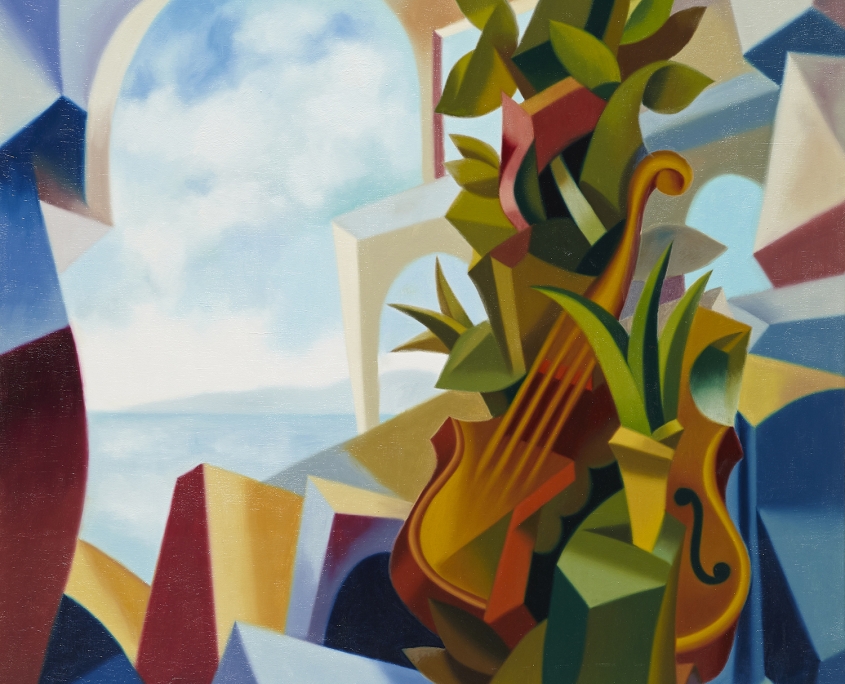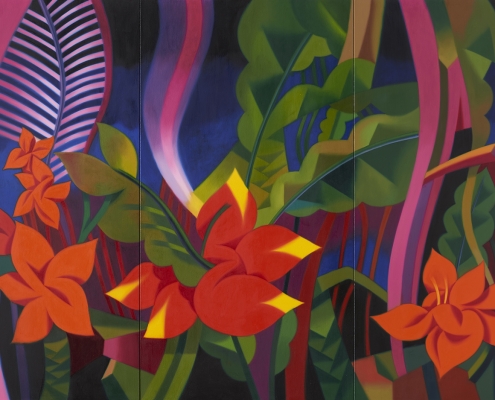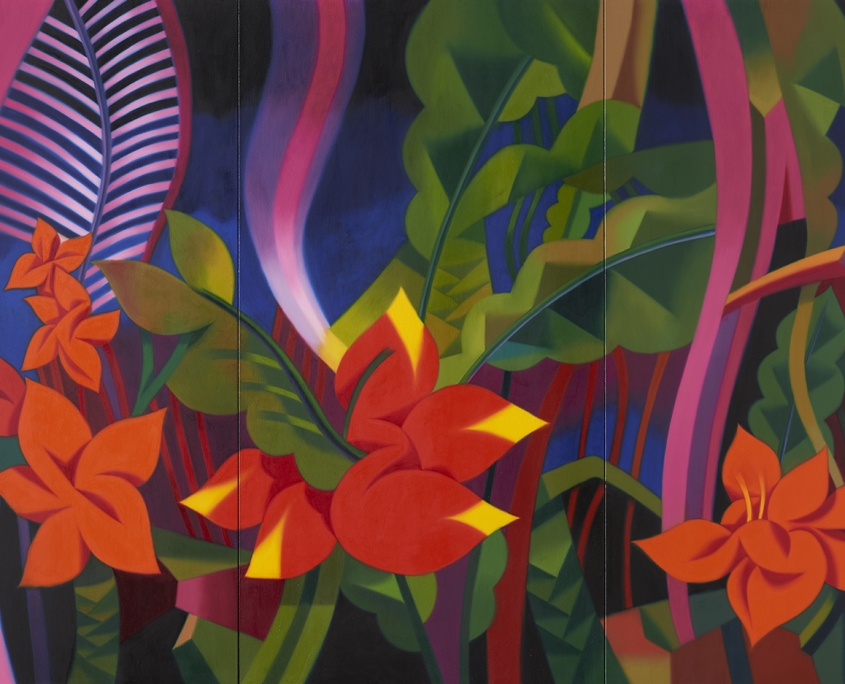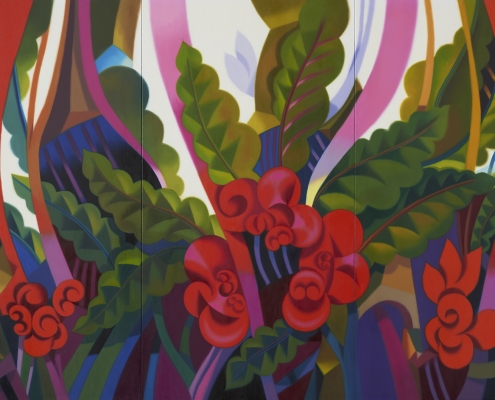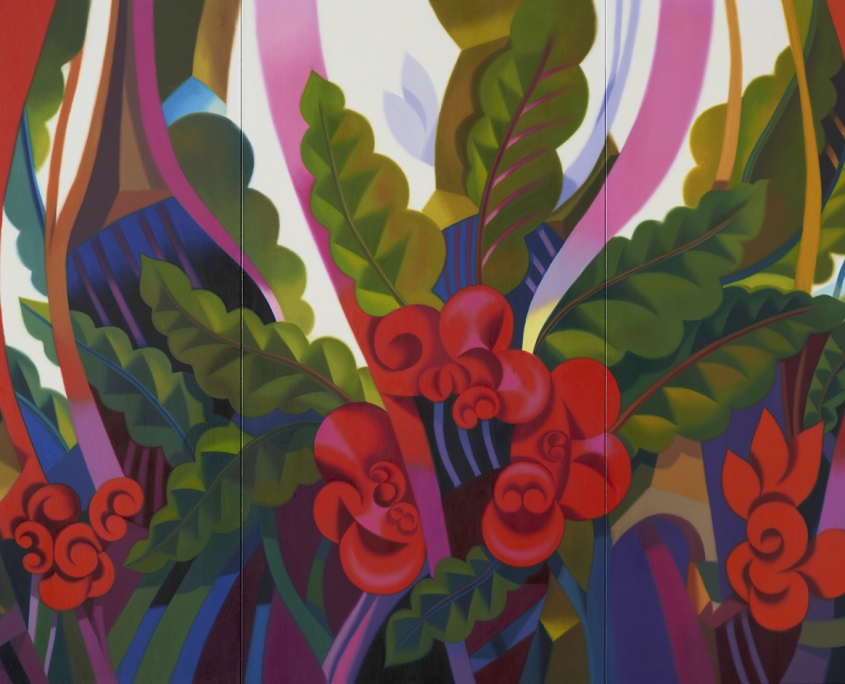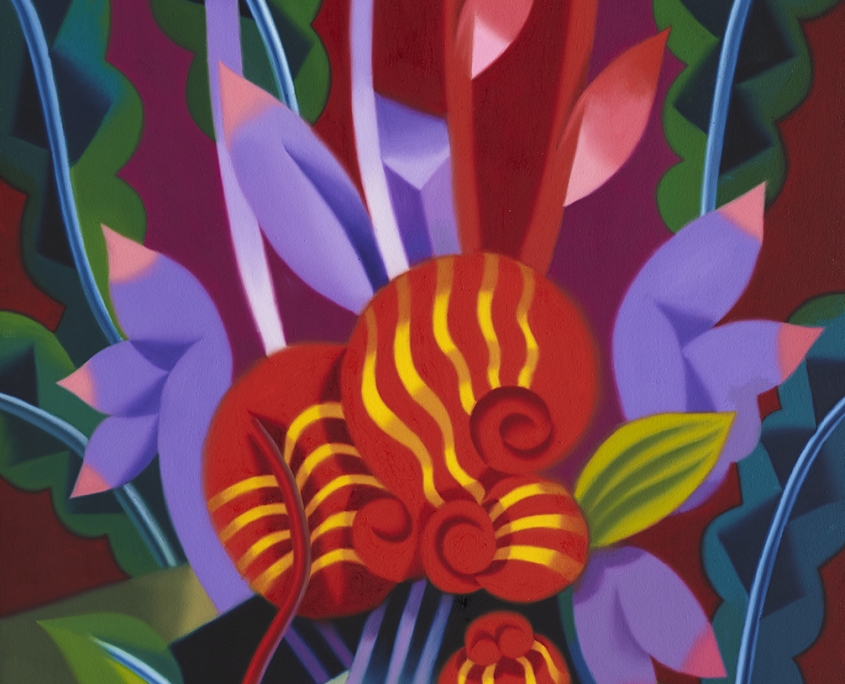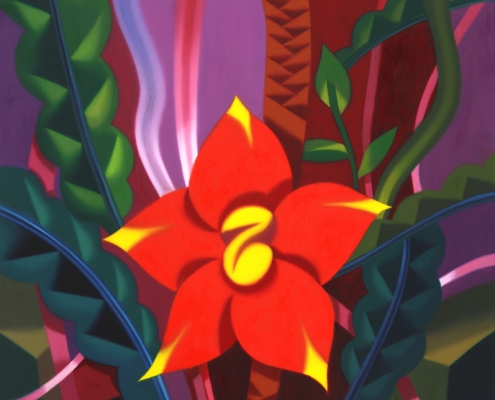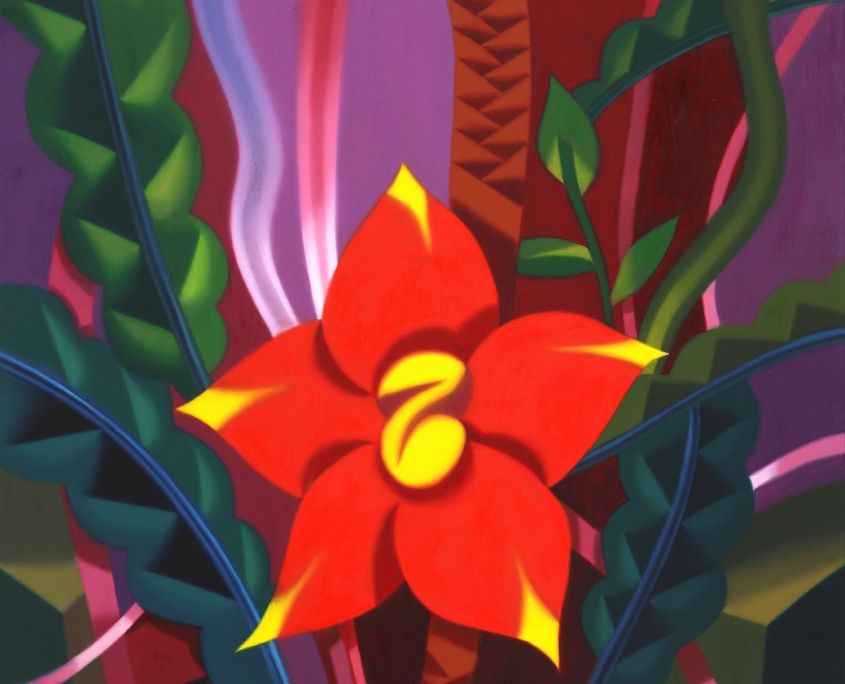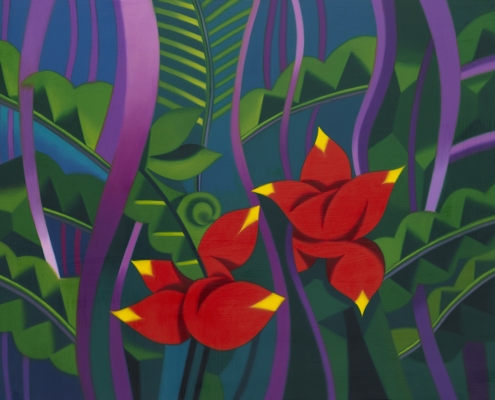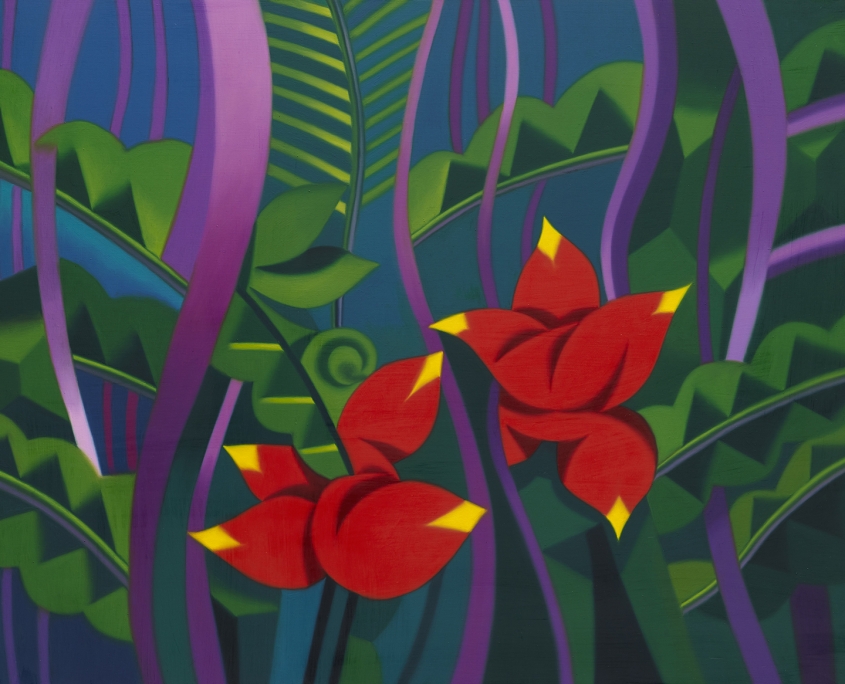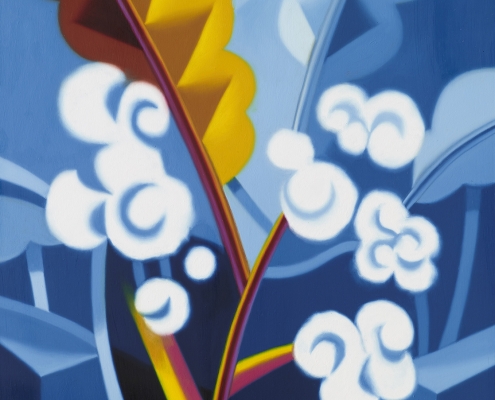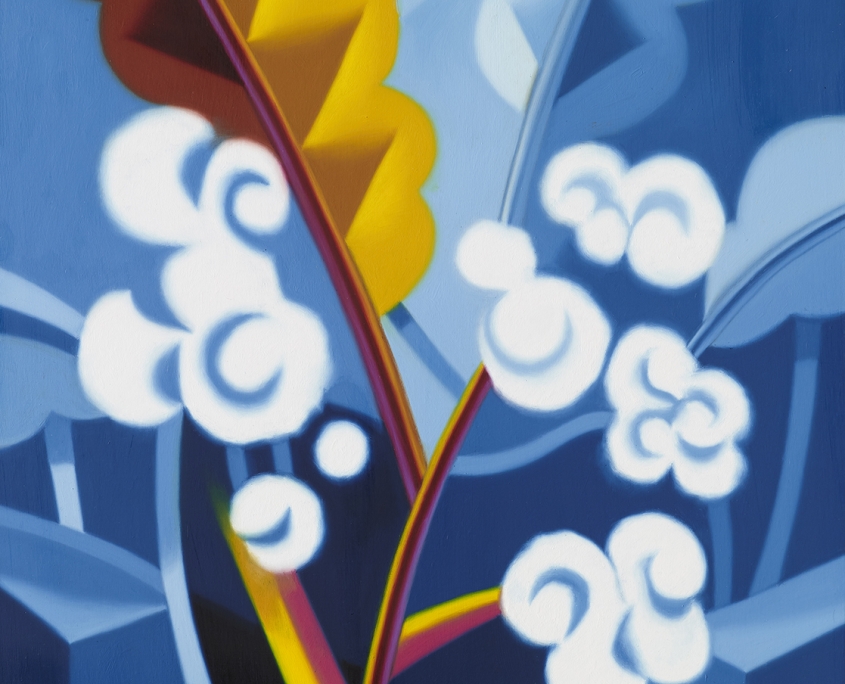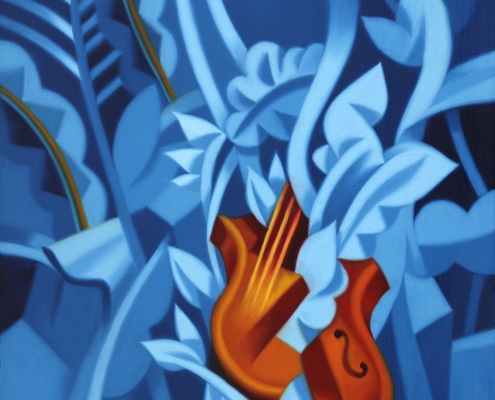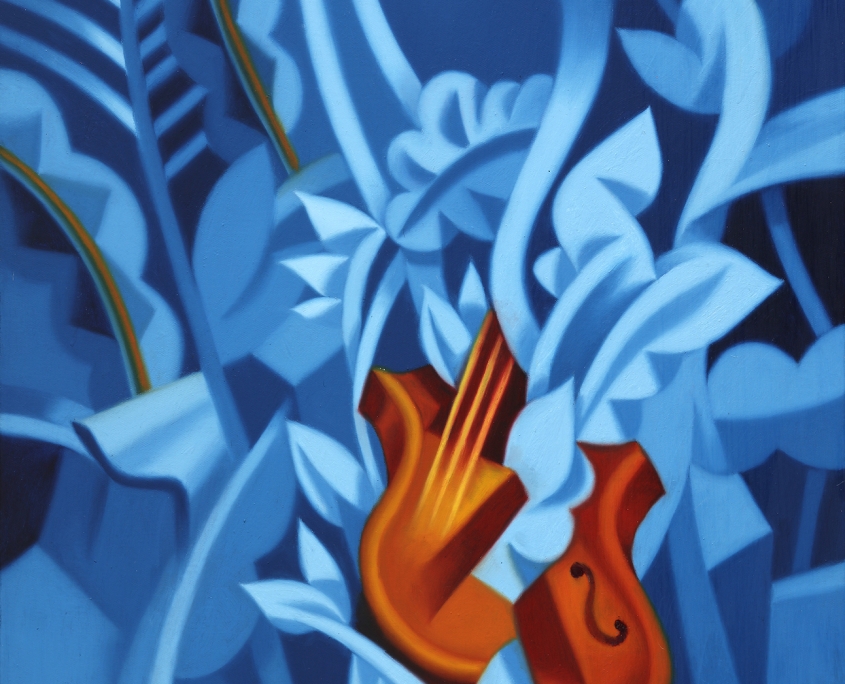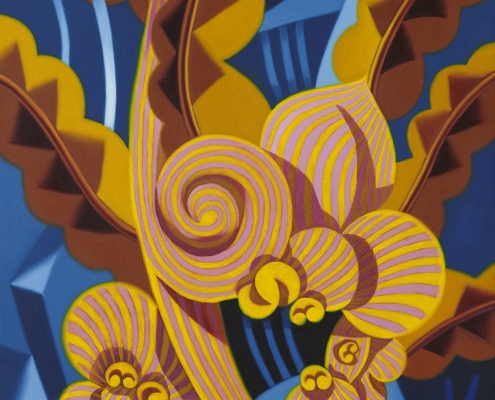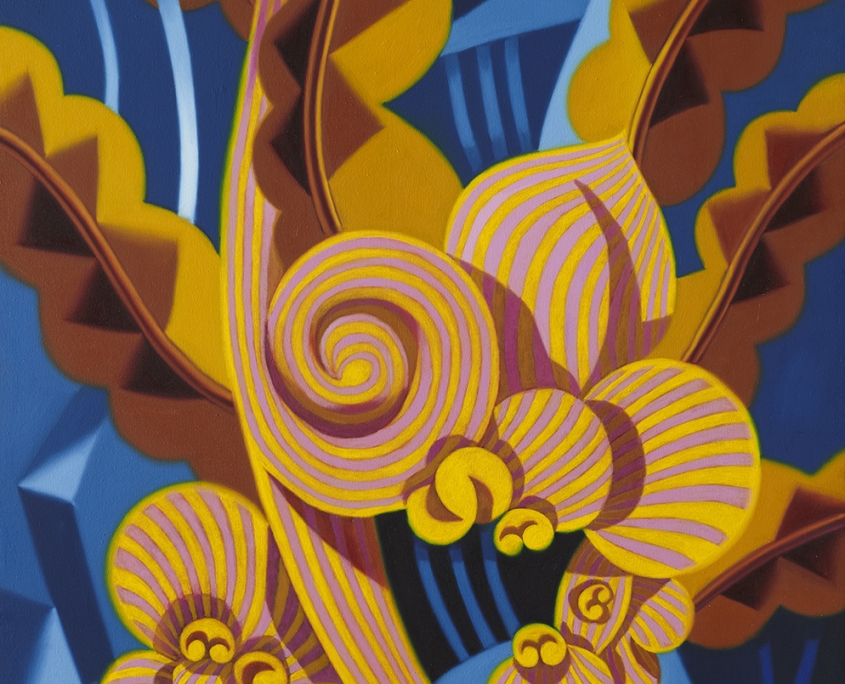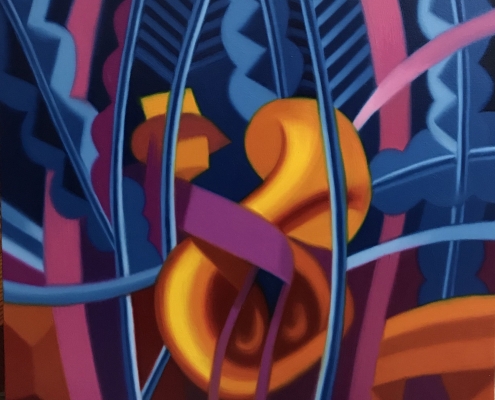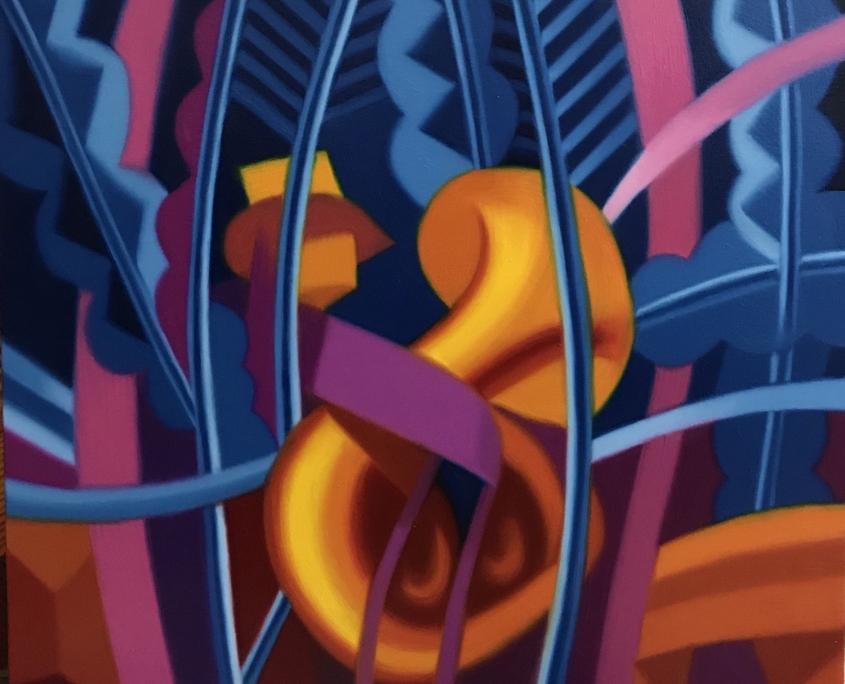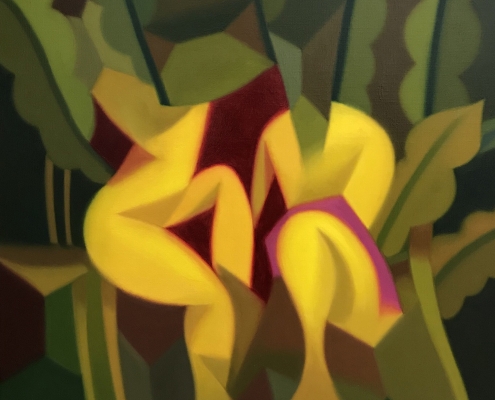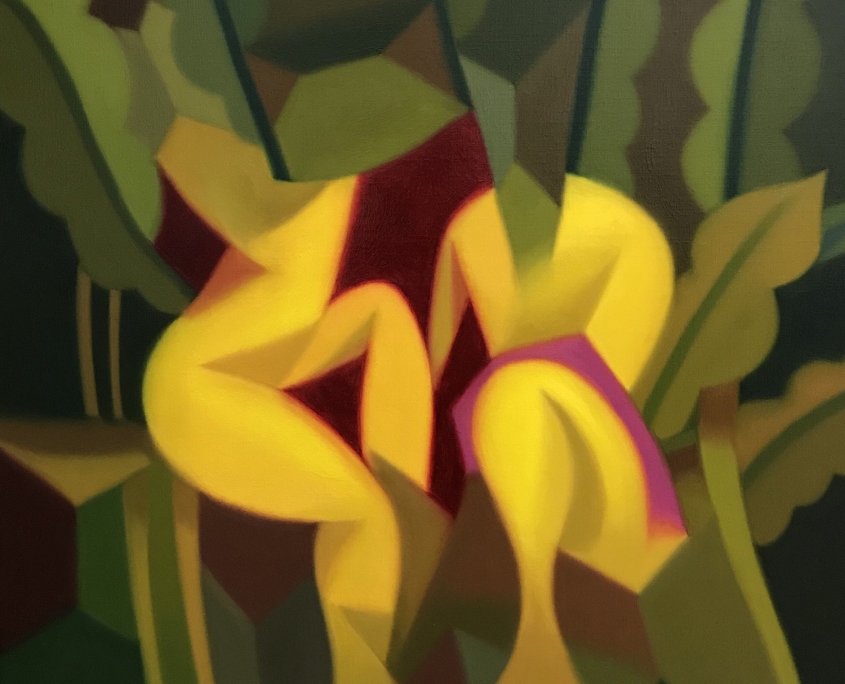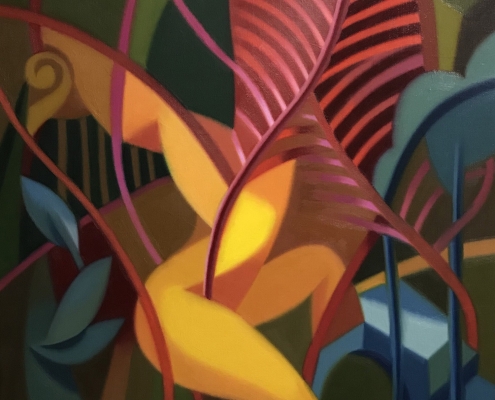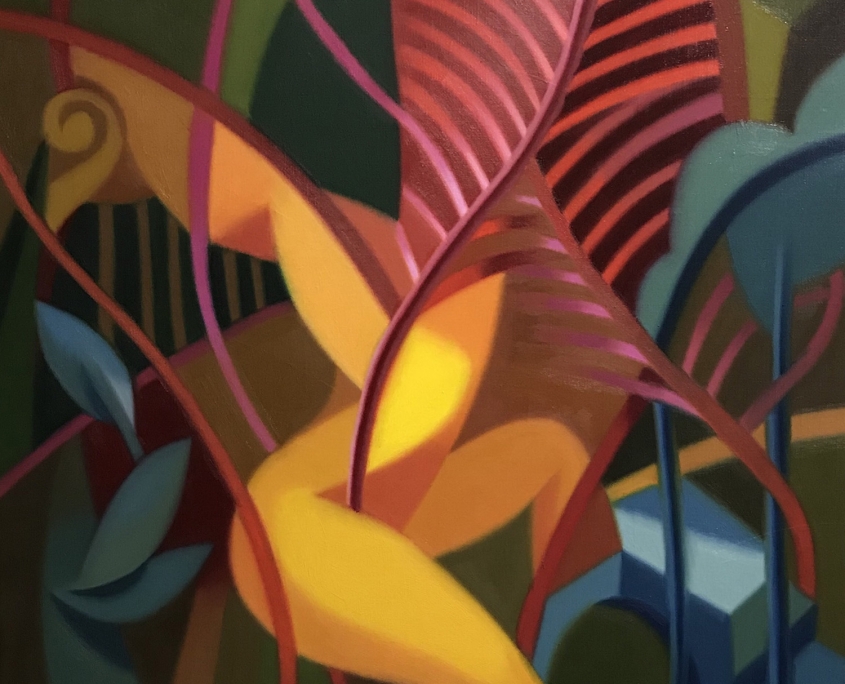Yoon Subo
윤수보
1994 프랑스 베르사이유 에콜 보자르 수료
개인전
2018 갤러리 인사아트, 서울
2017 아리수 갤러리, 서울
2015 유나이티드 갤러리, 서울
2014 유나이티드 갤러리, 서울
2014 갤러리 조이, 서울
2013 갤러리 2004고도, 서울
2012 ksd 문화갤러리, 서울
2011 갤러리 엠, 서울
2010 경향 갤러리, 서울
2009 유나이티드 갤러리, 서울
2008 갤러리 비움, 서울
2007 장은선 갤러리, 서울
2004 갤러리 가모, 서울
2003 와인빌카페, 서울
2002 갤러리 라메르, 서울
2000 갤러리 이젤, 서울
2000 다도화랑
2000 아트사이드넷카페, 서울
1997 은하 갤러리, 서울
1997 현대아트갤러리, 서울
1996 예맥화랑, 서울
1995 갤러리 고아미, 서울
1993 갤러리 미건, 서울
1993 다다 갤러리, 부산
1991 바다 갤러리, 부산
단체전
1994 파리, 서울전, 갤러리 쁘앙 후즈, 파리
서울, 파리전, 롯데화랑, 서울
아트페어
2012 화랑미술제, 서울, 코엑스
서울오픈아트페어, 서울, 코엑스
부산아트쇼, 부산, 벡스코
아시아 컨템포러리 아트 쇼, 홍콩
상하이 아트페어, 상하이
2013 월드아파트아트페어, 싱가포르
파운틴 아트페어, 뉴욕
아시아 컨템포러리 아트 쇼, 홍콩
작품소장처
광동 한방병원, 부산파라다이스 호텔, 조선 선재, 광릉 포레스트 CC
윤수보의 ‘회화의 회화’
윤수보의 회화에는 이른바 ‘포스트모던의 포스트’라는 이 시대 지금의 정신과 구조가 잘 녹아든 색채와 형태의 전개가 있다. 화려하고 선명한 색감의 줄기들이 화면 전체를 휘감고 거기에서부터 확산되는 빛의 약동은 무수한 신비의 공간을 화면에 형성하고 있기 때문이다.
마치 빛의 숲과 같은 현란한 동시에 은밀하기 짝이 없는 그의 공간은 오히려 지극히 자립적이고 고도로 정제된 형태와 색의 확산과 순환으로부터 발산되는 공간이다.
이때의 형태와 색들은 단순히 어떤 고착된 사물의 묘사를 위한 것도 아니지만 대상의 효과적인 인식을 위해 칠해지는 색칠은 더욱 아니다.
그것들은 오히려 별다른 이야기 꺼리나 내용을 동반 하지도 않는 색의 약동적인 생동감 자체를 중요시하며 거기서 파생되는 빛과 그 초월 된 공간성이 소중하게 다루어질뿐인 공간의식이다.
사실 지금까지 우리들의 그림에 대한 선입관에는 어떻든 내용이 풍성하고 흥미진진한 이야기거리가 살아 있어야 좋은 그림이라는 것이 은연중 자리잡고 있다. 물론 그러한 태도의 그림에도 좋은 작품이 없을 수 없겠지만 그러한 태도의 작품이라면 이미 시대의 살아있는 정신은 빈약한 것이 되고만 일종의 퇴물 적 그림일 가능성이 오히려 높다.
말하자면 그것은 현실의 정신(리얼리티)을 상실한 구태의연하고 상투적인 그림이고 말 그대로 신선미를 잃어버린 작품이라는 뜻이다. 오늘날에 요구되는 회화는 풍성한 내용이나 이야기꺼리 보다는 회화 자체의 형식적 가치를 충족시키면서도 자체 발생적인 이야기나 내용을 동반하는 사뭇 까다롭기 그지없는 정신적 자세를 기본 조건으로 내걸고 있는 보다 복합적이 회화로 발전한 셈이다. 바로 작가 윤수보의 이 빛의 회화가 그러한 조건을 충족시키고 있다는 것을 우리는 이해할 필요가 있다.
이른바 ‘회화의 회화’라고나 할 그의 그림은 회화의 가장 기본적이고 근원적인 조건으로서 색채의 평면성과 장식성을 앞세우면서도 그것을 보다 정신적인 비 물질의 차원으로 유도한 채. 하나의 색다르고 신선한 공간체험을 현실적으로 가능하게 해주는 일련의 초월성이 거기에 있기 때문이다.
마치 꽃과 같은 자연물이나 악기나 의자와 같은 일상의 기물들이 분명히 등장하면서도 그것이 결코 일상에서 조우하는 사물들이 아닌, 기묘한 이미지로 변신하는 것이 그것이며 그 이미지마저도 그저 변신된 존재가 아니라 독특한 빛의 공간에 스며들고 녹아든 이미지들이고 빛과 더불어 춤추고 생동하는 초월성을 거기에 포함시키고 있는 차원의 것들이다.
필자가 그의 그림이 ‘포스트모던 이후’의 정신과 구조를 잘 반영시키고 있다고 언급한 것도 사실 이러한 초월성을 염두에 둔 것이며 이것은 모더니즘이나 포스트모던에서는 찾아보기 어려운 요소의 하나라 할 수 있는 것이다.
그의 이 초월적 빛의 공간성은 모더니즘이 추구했던 이른바 ‘색면 회화’의 메카닉 하기 짝이 없는 자율의 회화와도 다르지만 포스트모던의 키치 위주의 산만하고 짙은 표현성과잉의 회화와도 거리를 두는 지점에 위치하고 있기 때문이다. 따라서 그의 회화는 지금, 이 시대, 곧 ‘포스트모던의 포스트’라 일컫는 새로운 모더니즘의 맥락 속에서 스스로의 회화를 성장시키고 증식시키는 와중에 있는 회화임에 틀림이 없다.
실상, 그러한 맥락 속에서 그의 회화를 바라본다면 참으로 매력적이고 아름다운 회화공간의 설정이 거기에 존재하고 있는 것을 확인 할 수 있다. 멋들어진 빛의 줄기와 그 순환적 휘감김이, 화면에 존재하는 모든 사물들을 감싸며 신선하고 신비로운 세계로 이끌어 가는 과정 자체가 하나의 서사시요 초월적 신화의 세계라 말할 수 있을 것이기 때문이다.
윤우학 <미술평론가, 충북대 명예교수>
Yoon Subo’s ‘Painting of the Paintings’
In Yoon Subo’s paintings, one can find a clever deployment of hues and forms where the spirit and structure of this era so-called ‘Post of Postmodernism’. Stems of luxurious and vivid colors whirl around the entire the canvas and then dynamics of the light, which spread from within formulate a myriad of mysterious spaces.
Glaring yet daringly secretive as if it were a forest of light, his spaces are ultimately self-sufficient: they are the arenas which diverge from highly refined forms, diffusions and circulations of colors. The forms and colors in his paintings are not the paintings that are colored to describe the fixed objects, much less they are the colors which are painted to gain the recognition of the subject effectively. They put importance in the vibrant mobility itself which does not even carry particular stories or substance; it’s the awareness of the space where the lights which are driven from there, and the surpassed spaciousness that is handled with value and care.
In fact, until now, our perception on art paintings indeed has prescribed that story materials must be present abundantly within the painting encompassing interesting details. There may exist good paintings posed in this attitude: even so, the painting of that kind would be of rather obsolete quality lacking today’s vital spirit. In other words, such painting would be pathetically old-fashioned with full of cliché’s lacking the spirit of reality, literally called an artwork which has lost its freshness. The artwork which is demanded by today’s standards basically requires a ‘stance’, a premise which is spiritual attitude, a quite strenuous one, which is not equipped with ample contents nor story materials, but with self-generated stories and contents while fulfilling the formatic values: all of which is said to have been lead to become more complicated world of paintings.
We need to reach to the understanding that artist Yoon Subo’s paintings of light fulfill these requirements. Presumably dubbed as ‘Painting of the Painting’, artist Yoon Subo’s paintings are preceded with the planarity and decorativeness of colors as most fundamental requirement; yet they yield a path to the domain of spiritual, non-materials since there lies a series of transcendence which enables a unique and refreshing spatial experience becoming a reality.
The evidence is found when natural products such as flowers, and daily wares like musical instruments and chairs apparently appear in the scene, transforming to bizarre images though as non-daily objects; these images are not only as transformed images, but as the images which have been blended into the space of light, and they are of the domain, in which the transcendence that dances and vibrates with the rays of light are included.
When I mention that Yoon Subo’s paintings reflect the spirit and the structure of the ‘Post- Postmodernism’, it is with the presumption of this transcendence which is an element hardly found in neither modernism nor postmodernism. That’s because the transcendental spaciousness of light which his paintings possess, differs from the mechanic-abuse of the ‘colored-plane painting’ in the autonomous paintings, a value which modernism has pursued; furthermore, his paintings are placed in the different position from that of postmodernism paintings which are seemingly distracted with deeply overloaded expressionism while placing kitsch in the center.
Thus, it is evident that his paintings today, in this era, in the context of new postmodernism so-called ‘Post of the Postmodernism’ are in the process of evolving and proliferating by their own force. From that perspective, one can confirm that most charming and exquisite spatial designations are found in his paintings. Stylish rays of light and its cyclical wrappings embracing the entire elements on screen lead the transition to the realm of mystery: such development can be stated as an epic itself, a world of transcendental myth.
Yoon Woo Hak


